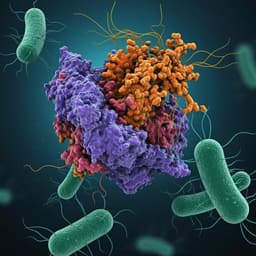
Chemistry
Inhibitor_Mol_VAE: a variational autoencoder approach for generating corrosion inhibitor molecules
H. Gong, Z. Fu, et al.
This study presents Inhibitor_Mol_VAE, a cutting-edge variational autoencoder model designed to generate corrosion inhibitor molecules with specific inhibition efficiencies. The research successfully identifies new molecules that demonstrate high inhibition efficiency at low concentrations, showcasing the model's ability to reconstruct and innovate based on critical physicochemical properties. The groundbreaking work was conducted by Haiyan Gong, Zhongheng Fu, Lingwei Ma, and Dawei Zhang.
Playback language: English
Related Publications
Explore these studies to deepen your understanding of the subject.







